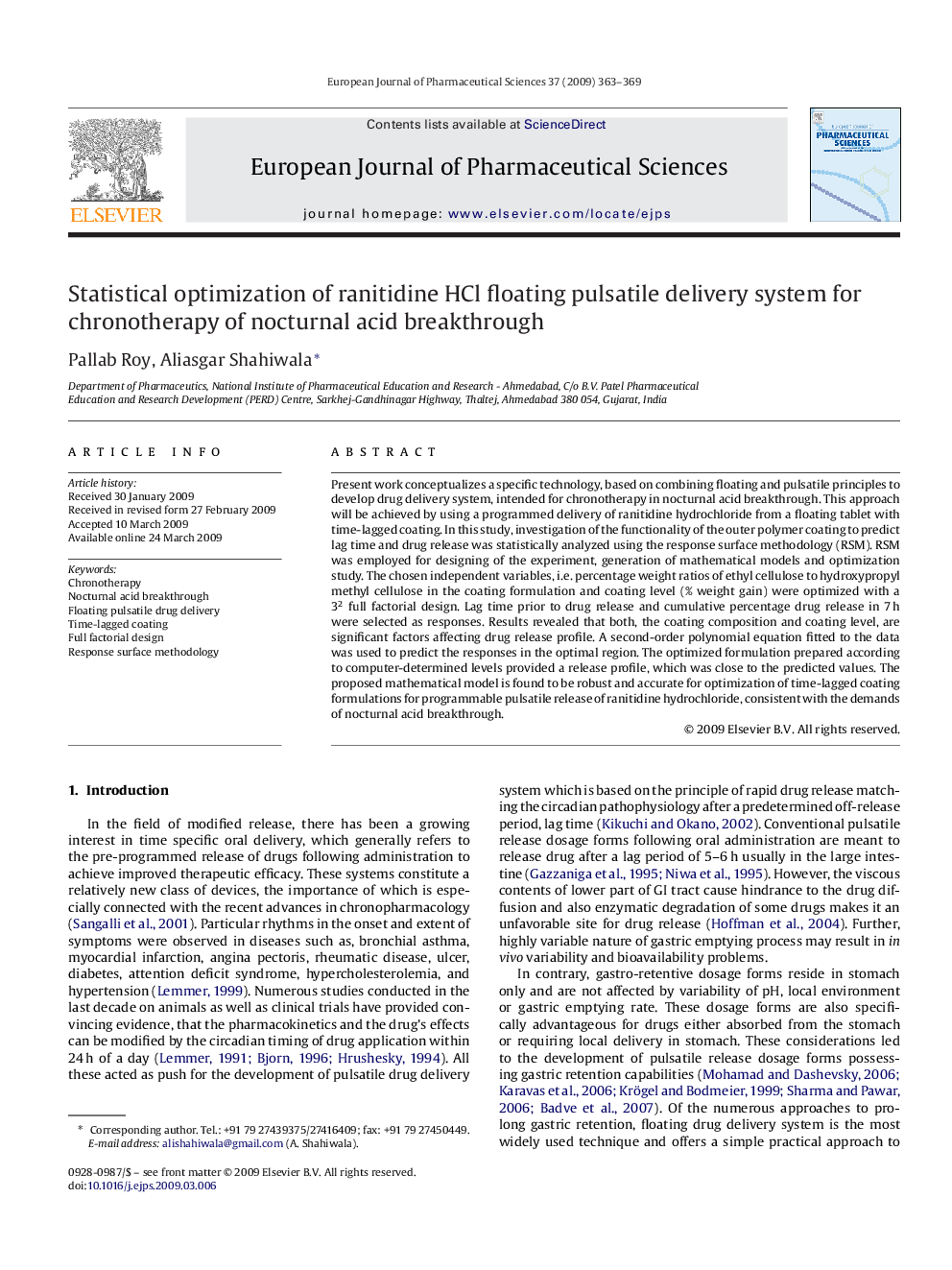| Article ID | Journal | Published Year | Pages | File Type |
|---|---|---|---|---|
| 2481692 | European Journal of Pharmaceutical Sciences | 2009 | 7 Pages |
Present work conceptualizes a specific technology, based on combining floating and pulsatile principles to develop drug delivery system, intended for chronotherapy in nocturnal acid breakthrough. This approach will be achieved by using a programmed delivery of ranitidine hydrochloride from a floating tablet with time-lagged coating. In this study, investigation of the functionality of the outer polymer coating to predict lag time and drug release was statistically analyzed using the response surface methodology (RSM). RSM was employed for designing of the experiment, generation of mathematical models and optimization study. The chosen independent variables, i.e. percentage weight ratios of ethyl cellulose to hydroxypropyl methyl cellulose in the coating formulation and coating level (% weight gain) were optimized with a 32 full factorial design. Lag time prior to drug release and cumulative percentage drug release in 7 h were selected as responses. Results revealed that both, the coating composition and coating level, are significant factors affecting drug release profile. A second-order polynomial equation fitted to the data was used to predict the responses in the optimal region. The optimized formulation prepared according to computer-determined levels provided a release profile, which was close to the predicted values. The proposed mathematical model is found to be robust and accurate for optimization of time-lagged coating formulations for programmable pulsatile release of ranitidine hydrochloride, consistent with the demands of nocturnal acid breakthrough.
